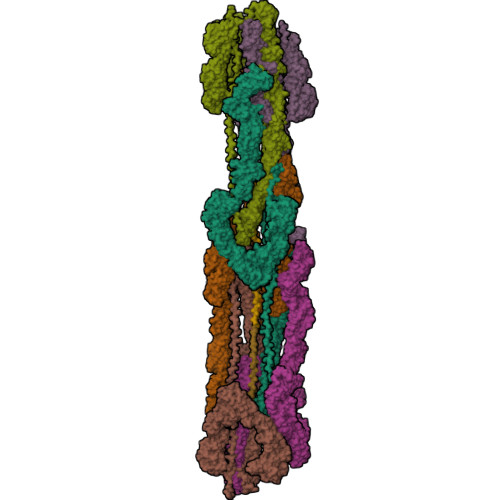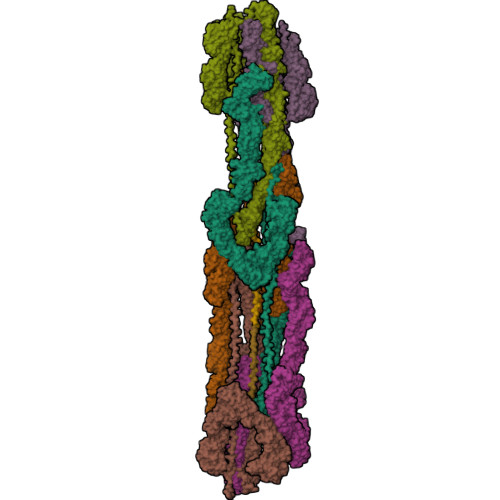Structure-guided discovery of protein and glycan components in native mastigonemes.
Huang, J., Tao, H., Chen, J., Shen, Y., Lei, J., Pan, J., Yan, C., Yan, N.(2024) Cell 187: 1733-1744.e12
- PubMed: 38552612
- DOI: https://doi.org/10.1016/j.cell.2024.02.037
- Primary Citation of Related Structures:
8WA2 - PubMed Abstract:
Mastigonemes, the hair-like lateral appendages lining cilia or flagella, participate in mechanosensation and cellular motion, but their constituents and structure have remained unclear. Here, we report the cryo-EM structure of native mastigonemes isolated from Chlamydomonas at 3.0 Å resolution. The long stem assembles as a super spiral, with each helical turn comprising four pairs of anti-parallel mastigoneme-like protein 1 (Mst1). A large array of arabinoglycans, which represents a common class of glycosylation in plants and algae, is resolved surrounding the type II poly-hydroxyproline (Hyp) helix in Mst1. The EM map unveils a mastigoneme axial protein (Mstax) that is rich in heavily glycosylated Hyp and contains a PKD2-like transmembrane domain (TMD). Mstax, with nearly 8,000 residues spanning from the intracellular region to the distal end of the mastigoneme, provides the framework for Mst1 assembly. Our study provides insights into the complexity of protein and glycan interactions in native bio-architectures.
Organizational Affiliation:
Beijing Frontier Research Center for Biological Structures, State Key Laboratory of Membrane Biology, Tsinghua-Peking Joint Center for Life Sciences, School of Life Sciences, Tsinghua University, Beijing 100084, China.












































